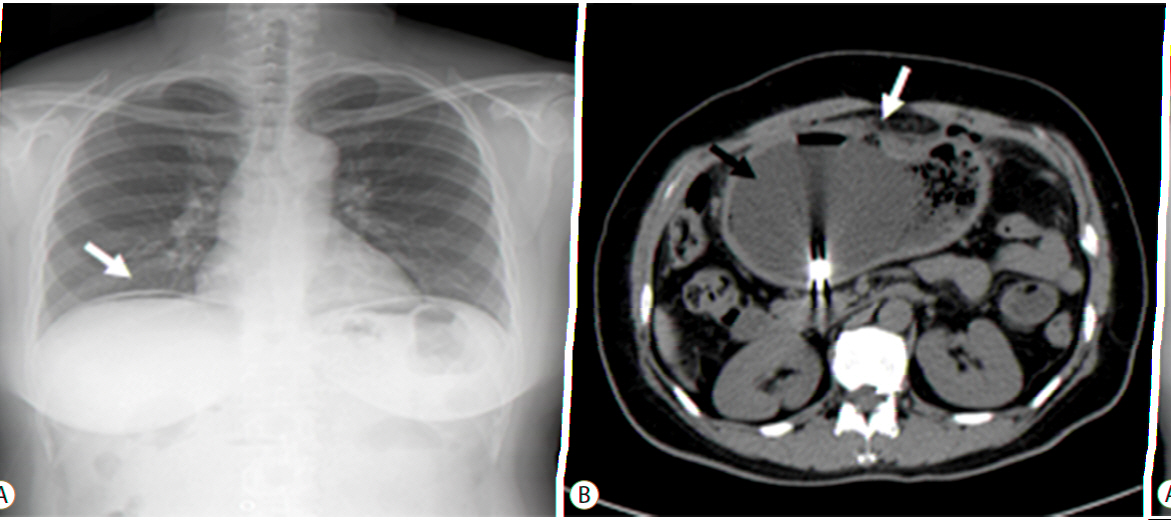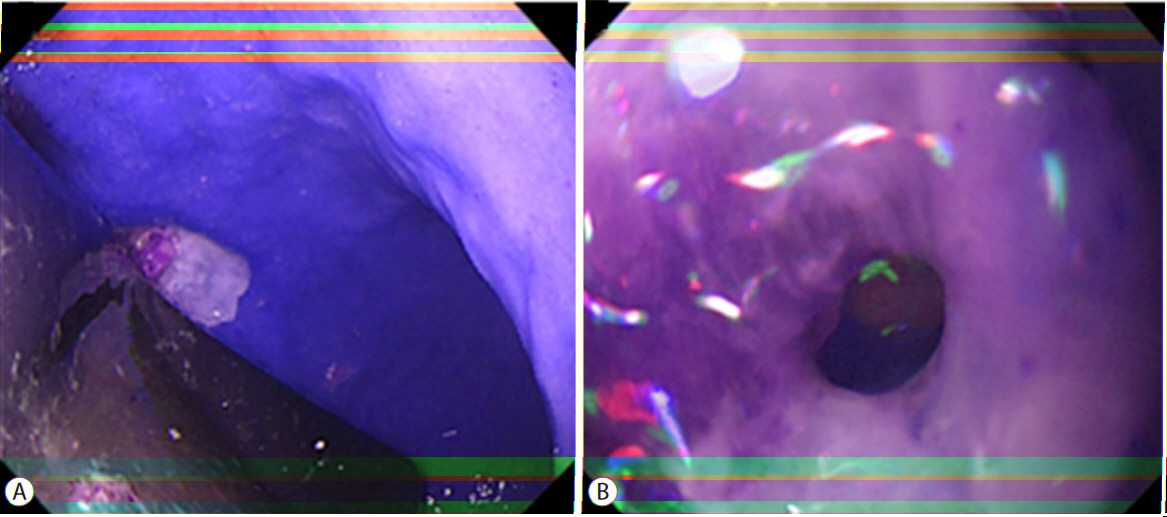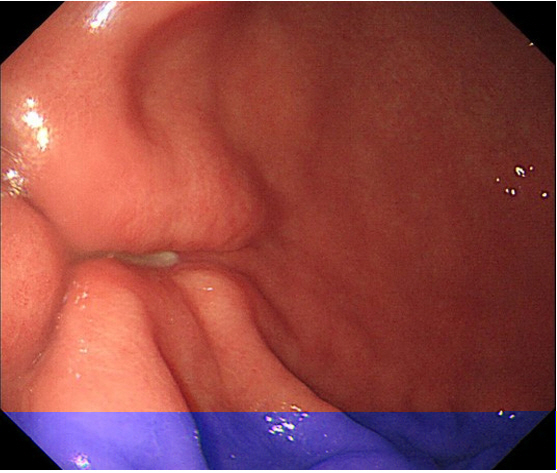Clin Endosc.
2017 Nov;50(6):602-604. 10.5946/ce.2017.015.
Gastric Perforation Caused by an Intragastric Balloon: Endoscopic Findings
- Affiliations
-
- 1Division of Gastroenterology and Hepatology, Department of Internal Medicine, Institute of Digestive Disease and Nutrition, Korea University College of Medicine, Seoul, Korea.
- KMID: 2398313
- DOI: http://doi.org/10.5946/ce.2017.015
Abstract
- Intragastric balloon (IGB) insertion has been most frequently used in the West as an effective endoscopic treatment for morbid obesity, in practice. Recently, there is a growing number of cases requiring IGB deployment for obesity treatment in Korea. One of the reported complications of IGB use is gastric perforation. A 47-year-old woman was admitted to the hospital with mild symptoms, 7 weeks after having an IGB placed. Esophagogastroduodenoscopy was performed and gastric ulcer perforation was observed in the ulcer base, where food particles were impacted. Laparoscopic primary repair was done successfully. This was a case of gastric perforation, secondary to poor compliance with a proton-pump inhibitor (PPI). PPI and Helicobacter pylori eradication are important for ulcer prevention following IGB deployment.
Keyword
MeSH Terms
Figure
Cited by 2 articles
-
Gastric Ulceration and Bleeding with Hemodynamic Instability Caused by an Intragastric Balloon for Weight Loss
Larrite Reed, Hawa Edriss, Kenneth Nugent
Clin Endosc. 2018;51(6):584-586. doi: 10.5946/ce.2018.038.Currently Available Non-Balloon Devices
Hang Lak Lee
Clin Endosc. 2018;51(5):416-419. doi: 10.5946/ce.2018.143.
Reference
-
1. Evans JD, Scott MH. Intragastric balloon in the treatment of patients with morbid obesity. Br J Surg. 2001; 88:1245–1248.
Article2. ASGE Bariatric Endoscopy Task Force; ASGE Technology Committee, Abu Dayyeh BK, et al. Endoscopic bariatric therapies. Gastrointest Endosc. 2015; 81:1073–1086.
Article3. Abou Hussein BM, Khammas AA, Al Ani AM, et al. Gastric perforation following intragastric balloon insertion: combined endoscopic and laparoscopic approach for management: case series and review of literature. Obes Surg. 2016; 26:1127–1132.
Article4. Nikolic M, Mirosevic G, Ljubicic N, et al. Obesity treatment using a bioenterics intragastric balloon (BIB)--preliminary Croatian results. Obes Surg. 2011; 21:1305–1310.
Article5. El Hage Chehade HH, El Khatib ZO, Abtar HK. What could happen if you insert a BioEnterics intragastric balloon after sleeve gastrectomy? Surg Obes Relat Dis. 2015; 11:e39–e41.
Article6. Genco A, Bruni T, Doldi SB, et al. BioEnterics intragastric balloon: the Italian experience with 2,515 patients. Obes Surg. 2005; 15:1161–1164.
Article7. Espinet-Coll E, Nebreda-Durán J, Gómez-Valero JA, et al. Current endoscopic techniques in the treatment of obesity. Rev Esp Enferm Dig. 2012; 104:72–87.
Article
- Full Text Links
- Actions
-
Cited
- CITED
-
- Close
- Share
- Similar articles
-
- Gastric Ulceration and Bleeding with Hemodynamic Instability Caused by an Intragastric Balloon for Weight Loss
- Perforation of a Gastric Tear during Esophageal Endoscopic Submucosal Dissection under General Anesthesia
- Iatrogenic Gallbladder Perforation during Gastric Endoscopic Mucosal Resection
- Short-term Outcomes of Intragastric Balloon Placement for Obesity Treatment
- Endoscopic gastritis, serum pepsinogen assay, and Helicobacter pylori infection




